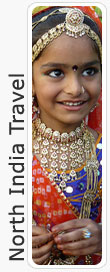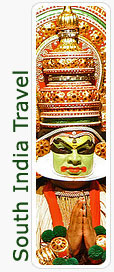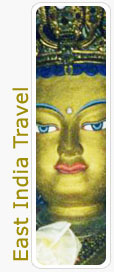|
Ranthambore is one among the many famous destinations of Rajasthan. A visit
to Ranthambore usually takes one to the tiger reserve here. However, the
place has much more to offer besides this by way of sightseeing and
excursions. Surrounded by the Vindhya and Aravali hill ranges and very near
to the outer reaches of the Thar Desert, Ranthambore offers the best of
desert land and the plains near the hills. Before it was declared as a game
sanctuary in 1955, Ranthambore was the hunting ground of the Maharaja of
Jaipur. In 1980, it became a national park and was listed among the reserves
include under Project Tiger. Ranthambore is considered to be one of the best
places in the world to photograph tigers in their natural habitat.
There are many interesting sites in Ranthambore. The park is regarded to be
the most suitable place in the world for wildlife photography, especially of
tigers. Besides the Ranthambore Park, there is the Ranthambore Fort which is
one of its kind in Rajasthan; the Jogi Mahal which is a wonderful forest
guesthouse; and various species of flora and fauna which are worth a look.
In Ranthambore one also get the taste of local customs and traditions of
this region. A Jeep safari followed by dinner consisting of traditional
local delicacies is an experience which should not be missed.
An excursion to nearby places of historical importance gives a fairly good
idea of the place and its past. Sawai Madhopur village is the entry point
for many nearby important destinations. It is known for its historical
monuments and related legends. Karauli is famous for temples and
architecture. Again, Bundi, Kota and Tonk are three other important places
that may be visited. The places have historical significance, many beautiful
gardens, and temples and reflect the cross-cultural influence here owing
settling of different communities here.
PARK - One of the finest tiger reserves in the country it is the main
attraction of Ranthambore. It is spread over an area of 392 sq. km and full
of dry deciduous forests sprawed over the Aravalli and Vindhya ranges.
Occasionally one may chance upon a tiger strolling near the Padam Talab, Raj
Bagh Talab and Milak Talab. The park also houses some rare species of desert
creatures like the sambhar, chital, chinkara, nilgai, langur, wild boar and
peafowl. The park was visited by the Bill Clinton during his visit to India.
RANTHAMBORE FORT - This fort built by the Chauhans in the
10th century is one of the oldest forts of Rajasthan. Its strategic location
was ideal for keeping enemies at bay. The fort is associated with the
historical tragedy of royal women performing jauhar (self immolation) when
Ala-ud-din Khilji sieged this fort in 1303. The fort has many temples,
tanks, massive gates and walls.
JOGI MAHAL - This is the forest rest house overlooking the
pretty Padam Talab. What attracts a large number of tourists every year to
the Jogi Mahal is the ancient banyan tree, the second largest banyan tree in
India.
NATURAL WEALTH - Ranthambore is characterized by the
typical desert landscape of Rajasthan. The park is the natural haunt of a
significant number of panthers. Due to the sizeable population of tigers in
the Ranthambore national park, this site has been taken under Project Tiger.
The flora consists of dry deciduous shrubs and not very high trees. The
topography varies from secure forests to open scrubland. Dhok is the most
common tree to be found. The aquatic flora of this place includes lovely
lotuses and water lilies. The fauna includes mammalian species like
antelopes, nilgai, sambhar, chital, sloth bear, wild boar, chinkara,
porcupines, jackals, leopards, jungle cats, fox, caracals, hyena, gazelle,
Indian hare and mongoose. There are also about 264 species of birds to be
found here.
|









